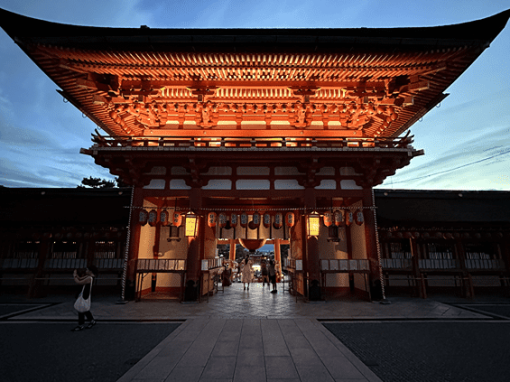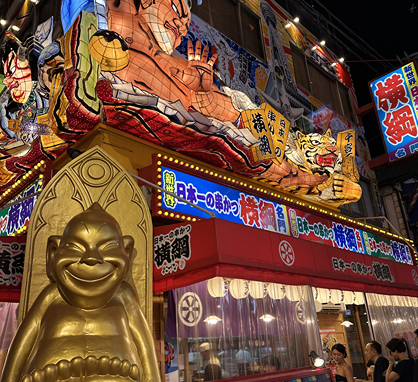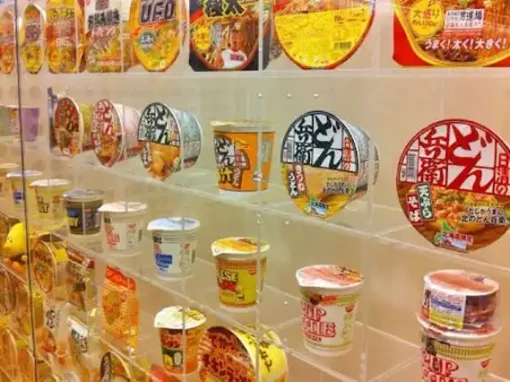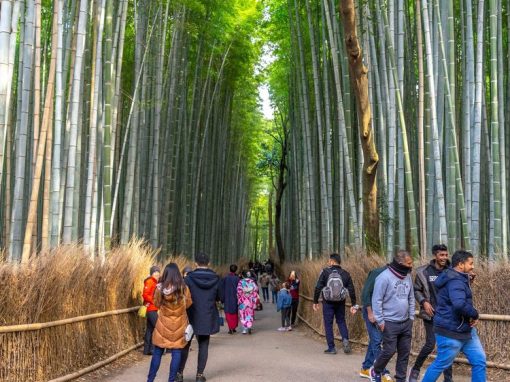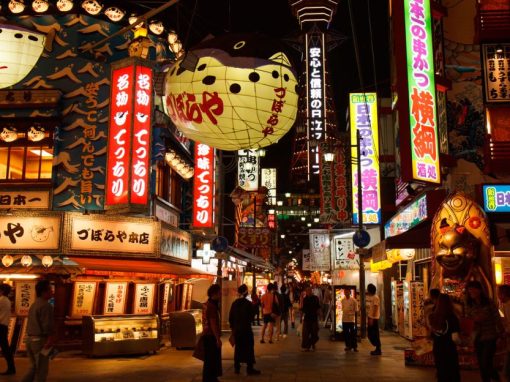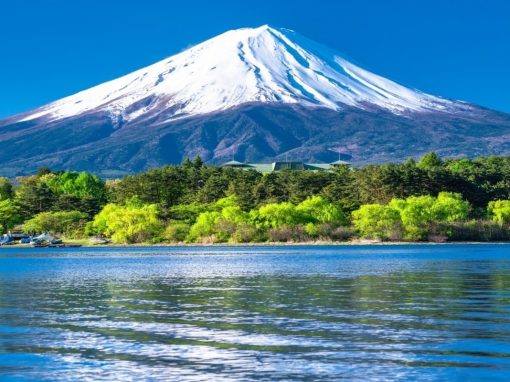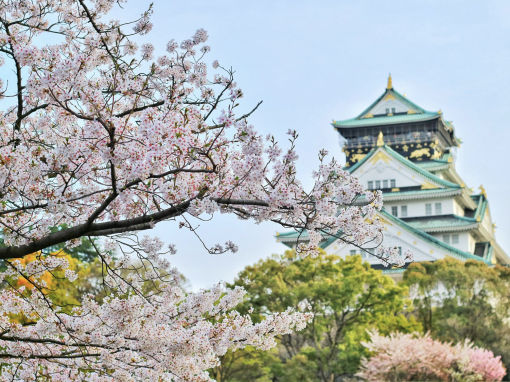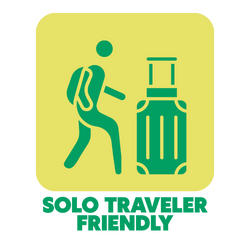




*Prices include airfare, lodging, ground transportation, meals, activity fees, and more.
*Any exceptions are clearly disclosed in the application.
Day 1: Overnight Flight from Nashville, Tennessee
Day 2: Tokyo
Arrive in Tokyo, the capital of Japan as well as its largest city. Meet our local guide and begin to explore the city, which offers an intriguing blend of the ancient and modern worlds.
Day 3: Tokyo
Kick-start the day with a guided sightseeing tour, beginning at the Meiji Shrine, which honors the deified spirits of Emperor Meiji and his wife, Empress Shoken. Continue on to view the Imperial Palace Plaza; the culturally significant Asakusa Kannon Temple; Nakamise Street, a visual feast of densely packed shops and eateries; and the Tokyo SkyTree Tower, one of the world’s highest towers at 2,080 feet tall.
Day 4: Mt Fuji Area
Depart Tokyo for the Mount Fuji area. Get a closer look at the still-active volcano—the highest point in Japan at 12,389 feet and one of the country’s three revered “holy mountains”—when you visit Mount Fuji’s breathtaking Kawaguchiko 5th Station, the base point from which most hikers start their ascent to the summit. Enjoy a scenic Lake Ashi boat cruise followed by a round-trip ride on the nearby Hakone Komagatake Ropeway, an aerial tram that offers spectacular views as it takes you to the summit of imposing Mount Komagatake.
Day 5: Kyoto
This morning, depart on the high-speed bullet train to Kyoto. Upon arrival, have time for lunch on your own. Then see the breathtaking Kiyomizu-dera Temple, a mountainside structure that offers stunning views of the city. Check into your next hotel and have dinner together.
Day 6: Kyoto
This morning, visit the shimmering Kinkakuji Golden Pavilion, a Zen Buddhist temple with two floors covered in gold leaf, and visit Nishiki Market. Then you will have an exchange program at a local high school. Here you’ll have the chance to interact with local students and participate in a traditional Japanese tea ceremony, a fixture in the country’s culture. Note: School visit subject to school availability and scheduling. Should a school visit not be possible, this will be exchanged for another cultural activity.
Day 7: Osaka
This morning visit the Fushimi Inari Taisha Shrine, a Shinto temple famous for its more than 5,000 vibrant orange toriis, or symbolic gateways. This afternoon, travel to nearby Nara, once the imperial capital of Japan and home to some of the country’s most culturally significant attractions. Begin your sightseeing tour with a visit to the magnificent Todaiji Temple, considered one of the world’s largest wooden structures. Then explore serene Nara Park, noted for its free-roaming deer as well as some of the country’s oldest Buddhist temples, before seeing Kasuga Shrine, famous for its hundreds of lovely lanterns donated by worshippers. Continue to Osaka, where you will check into your next hotel.
Day 8: Osaka
Discover the highlights of Osaka today. Your first visit is to Osaka Castle, a historic attraction in a lush urban park that contrasts sharply with its skyscraper neighbors. Then explore the unique and lively CupNoodles Museum Osaka Ikeda, where you will learn more about this world-famous food. Next stop is at the Kuromon Ichiba Market, a foodie’s delight that offers an amazing and exotic array of Japanese culinary specialties and is one of the oldest and most well-known fresh food markets in the world. Continue your walking tour with time to browse for souvenirs in the Shinsaibashi district, a colorful shopping arcade. The afternoon will be spent visiting our sister school, Osaka Jogakuin University, where we’ll participate in language lessons. Tonight, enjoy a farewell dinner along Dotonbori, a famous food street in Osaka known for its traditional Japanese pancakes, okonomiyaki.
Day 9-10: Journey home
UNITED NATIONS SUSTAINABLE DEVELOPMENT GOALS

Goal 4: Quality Education
Osaka Jogakuin University Visit: By visiting Bethel’s sister school and engaging in English teaching activities, students contribute to promoting inclusive and equitable quality education. The experience fosters cultural exchange, language learning, and the global sharing of knowledge, which are key components of this goal.

Goal 8: Decent Work & Economic Growth
Cultural and Educational Immersion: Engaging with local businesses, museums, and historical sites like the Kuromon Ichiba Market provides students with valuable insights into Japan’s thriving economy. It highlights the role of innovation, technology, and traditional industries in sustainable economic development.

Goal 11: Sustainable Cities & Communities
Exploring Urban and Natural Spaces: Visiting vibrant cities like Tokyo and Osaka, as well as natural sites like Mount Fuji, offers students an understanding of urban sustainability and environmental preservation. The trip emphasizes the balance between modern infrastructure and nature, promoting responsible urban planning.

Goal 12: Responsible Consumption and Production
Cultural and Culinary Exploration: Through experiencing Japanese cuisine and visiting local markets, students gain insights into responsible consumption, sustainable food production, and Japan’s emphasis on waste minimization, as demonstrated by practices such as the use of seasonal and locally sourced ingredients.

Goal 17: Partnerships for the GoalsInternational Collaboration
The trip fosters international partnerships, particularly through exchanges with Osaka Jogakuin University. This fosters cross-cultural understanding, collaboration, and the sharing of best practices in education, contributing to global cooperation.
EDUCATIONAL AND CULTURAL CONNECTIONS
- Economic Development: Visits to places like the CupNoodles Museum highlight technological innovation, business practices, and the global impact of Japanese companies. Exploring Osaka’s Kuromon Ichiba Market also introduces concepts in entrepreneurship, marketing, and international trade.
- Hospitality & Tourism: The itinerary offers insights into Japan’s tourism industry, showcasing various cultural landmarks, historical sites, and natural wonders. It also offers a look at traditional and modern aspects of the hospitality sector through visits to temples, shrines, museums, and restaurants.
- World History: The visit to Osaka Jogakuin University and the immersion in Japanese culture, including traditional tea ceremonies, temples, and markets, provides an understanding of international relations, cultural exchange, and language skills.
- Conservation: Visiting Mount Fuji, a natural wonder, and enjoying scenic boat cruises around Lake Ashi provide a unique opportunity to explore environmental science, conservation, and the impact of tourism on natural landscapes.

